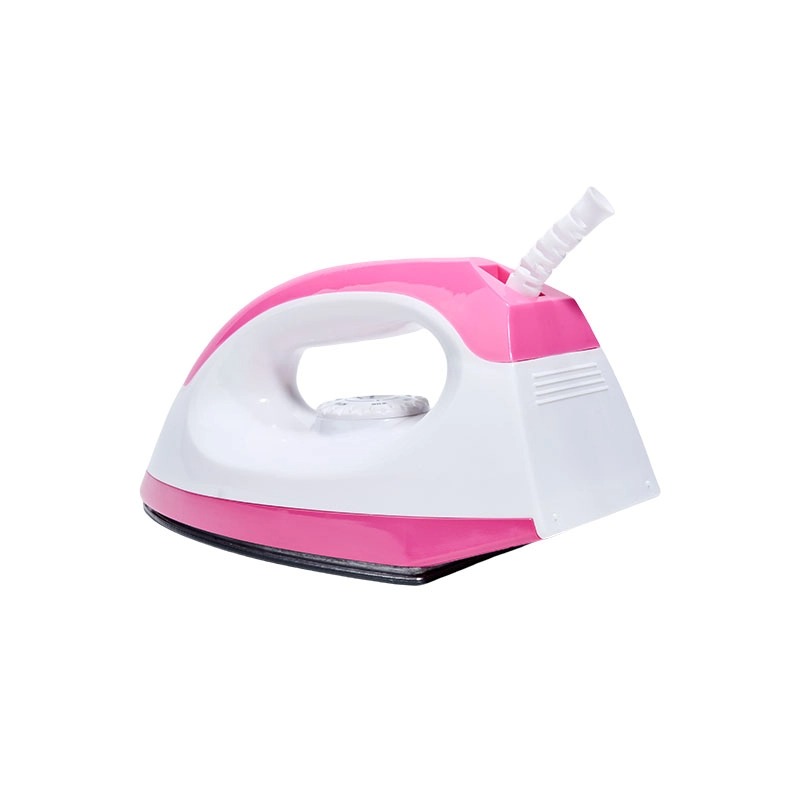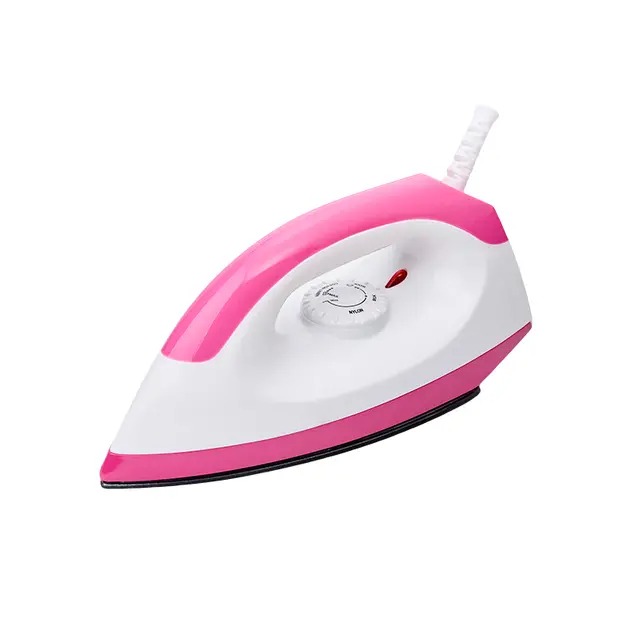- All
- Product Name
- Product Keyword
- Product Model
- Product Summary
- Product Description
- Multi Field Search
Views: 167 Author: Site Editor Publish Time: 2025-09-13 Origin: Site








The modern wardrobe is filled with a wide range of fabrics, from lightweight silk blouses to heavy cotton jeans. Each type of fabric responds differently to heat, moisture, and pressure. Handheld irons have become increasingly popular thanks to their portability, ease of use, and ability to smooth garments quickly.
But here’s the pressing question: do handheld irons work on all fabrics? Understanding this is critical because using the wrong setting—or the wrong device—can permanently damage delicate materials. In this article, we’ll explore how handheld irons interact with different fabrics, where they excel, where they fall short, and how you can make informed decisions when caring for your clothing.
Handheld irons are designed to provide fast and efficient wrinkle removal without the bulk of traditional steam irons or large garment steamers. They combine portability with convenience, making them ideal for frequent travelers or people with limited storage space. However, the very compactness that makes them appealing also limits how much heat and steam they can produce. Since fabrics vary widely in thickness, weave, and sensitivity, the effectiveness of handheld irons depends largely on the fabric itself.
Key Insight: Handheld irons are not a one-size-fits-all solution. They work well for many fabrics but require care and technique for delicate or thick materials.

The primary factor in determining whether handheld irons work on all fabrics is heat tolerance. Different fabrics require different ironing temperatures:
| Fabric Type | Recommended Heat Setting | Risk When Using High Heat |
|---|---|---|
| Cotton | High | May scorch if left too long |
| Linen | High with steam | Can burn if dry ironed |
| Wool | Medium with steam | May shrink or shine |
| Silk | Low | Easily scorched or discolored |
| Polyester/Blends | Low to Medium | Can melt or wrinkle further |
| Nylon | Very Low | Extremely prone to melting |
| Denim | High with pressure | Needs sustained heat to smooth |
Handheld irons can cover this spectrum, but their effectiveness is tied to how well you control their heat settings and how evenly steam penetrates the fabric.
Heavy fabrics like denim, corduroy, and wool blends are notoriously hard to smooth. Handheld irons usually lack the weight and surface area of traditional irons, meaning they struggle to press out deep wrinkles. While the steam function can help relax fibers, the limited contact area requires multiple passes.
Example: A handheld iron can soften the wrinkles in jeans for casual wear, but if you want sharp creases or a polished look, a full-sized iron may be necessary.
Verdict: Handheld irons work on thick fabrics, but not always effectively. They’re best for touch-ups rather than professional-quality finishes.
Delicate fabrics such as silk, chiffon, and satin are highly sensitive to direct heat. The good news is that handheld irons often include lower heat settings and a steaming mode that lets you smooth wrinkles without pressing hard against the material.
Technique Tip: Always hover the handheld iron slightly above the fabric while using steam. This reduces the risk of scorching while still relaxing the fibers.
Verdict: Handheld irons can be a safer option than traditional irons for delicate fabrics, provided you use the steam-hover method and avoid direct contact with the soleplate.
To answer whether handheld irons work on all fabrics, it’s helpful to compare their performance with standard irons:
| Fabric | Handheld Iron Effectiveness | Traditional Iron Effectiveness | Best Use Case |
|---|---|---|---|
| Cotton | Good for light wrinkles; multiple passes needed | Excellent; crisp finish | Everyday shirts |
| Linen | Decent with steam; requires patience | Excellent; high steam output | Summer outfits |
| Wool | Good with steaming | Excellent with pressing cloth | Sweaters, trousers |
| Silk | Safe with steam hover | Risky without skill | Blouses, scarves |
| Denim | Limited; not fully crisp | Excellent; deep penetration | Jeans, jackets |
| Polyester | Adequate; must avoid overheating | Good with low setting | Blends, activewear |
This table shows that while handheld irons are versatile, they often act as a complement to traditional irons rather than a replacement.
Even though handheld irons have limitations, they offer several advantages that make them appealing across a range of fabrics:
Travel-ready: Their compact size makes them ideal for quick fixes while on the go.
Gentler on Delicates: Steam-only modes reduce direct heat exposure.
Quick Wrinkle Touch-ups: Perfect for fabrics like polyester or cotton that wrinkle quickly but don’t require deep pressing.
Energy-efficient: Smaller size means faster heating and lower power consumption.
Key Takeaway: Handheld irons shine in convenience and gentle care but fall short when you need precision pressing on thicker fabrics.
Many users damage clothing by misusing handheld irons. Some common mistakes include:
Using high heat on synthetics – causes melting or shiny spots.
Pressing too hard on delicate fabrics – risks permanent damage.
Skipping distilled water in the tank – leads to mineral buildup and staining.
Ironing dirty garments – heat can set stains permanently.
Pro Tip: Always check the care label before using handheld irons. This simple step prevents most fabric disasters.

If you want to make the most out of your handheld iron, here are practical strategies:
Use a pressing cloth between the iron and delicate fabrics.
Pre-dampen thicker fabrics slightly with a spray bottle for better results.
Work in small sections to ensure even coverage.
Hover-and-steam method for silk and chiffon.
Regular maintenance by cleaning the soleplate and descaling the water tank.
These steps help bridge the gap between handheld irons and traditional irons, extending their usability across a wider variety of fabrics.
Handheld irons can handle most everyday fabrics like cotton, polyester, and blends with relative ease. They are particularly useful for delicate fabrics when used carefully. However, they are less effective on thick, heavy materials like denim and wool, where deeper heat and pressure are required.
Ultimately, handheld irons are best viewed as a versatile companion tool rather than a universal solution. If you value convenience, portability, and quick wrinkle removal, they’re an excellent investment—but for professional or heavy-duty fabric care, a traditional iron remains indispensable.
1. Can handheld irons replace traditional irons?
Not completely. While they work well for quick touch-ups and delicate fabrics, traditional irons still deliver better results on thick materials.
2. Are handheld irons safe for silk and satin?
Yes, but only if you use the steam-hover method and avoid direct contact with the hot soleplate.
3. Do handheld irons work on upholstery or curtains?
They can help refresh and remove light wrinkles, but large steamers are better for wide surfaces.
4. How long do handheld irons take to heat up?
Most models heat within 30–60 seconds, making them much faster than many traditional irons.
5. Can handheld irons damage clothes?
Yes, if used improperly—especially on synthetic or delicate fabrics at high heat. Always check fabric care labels first.